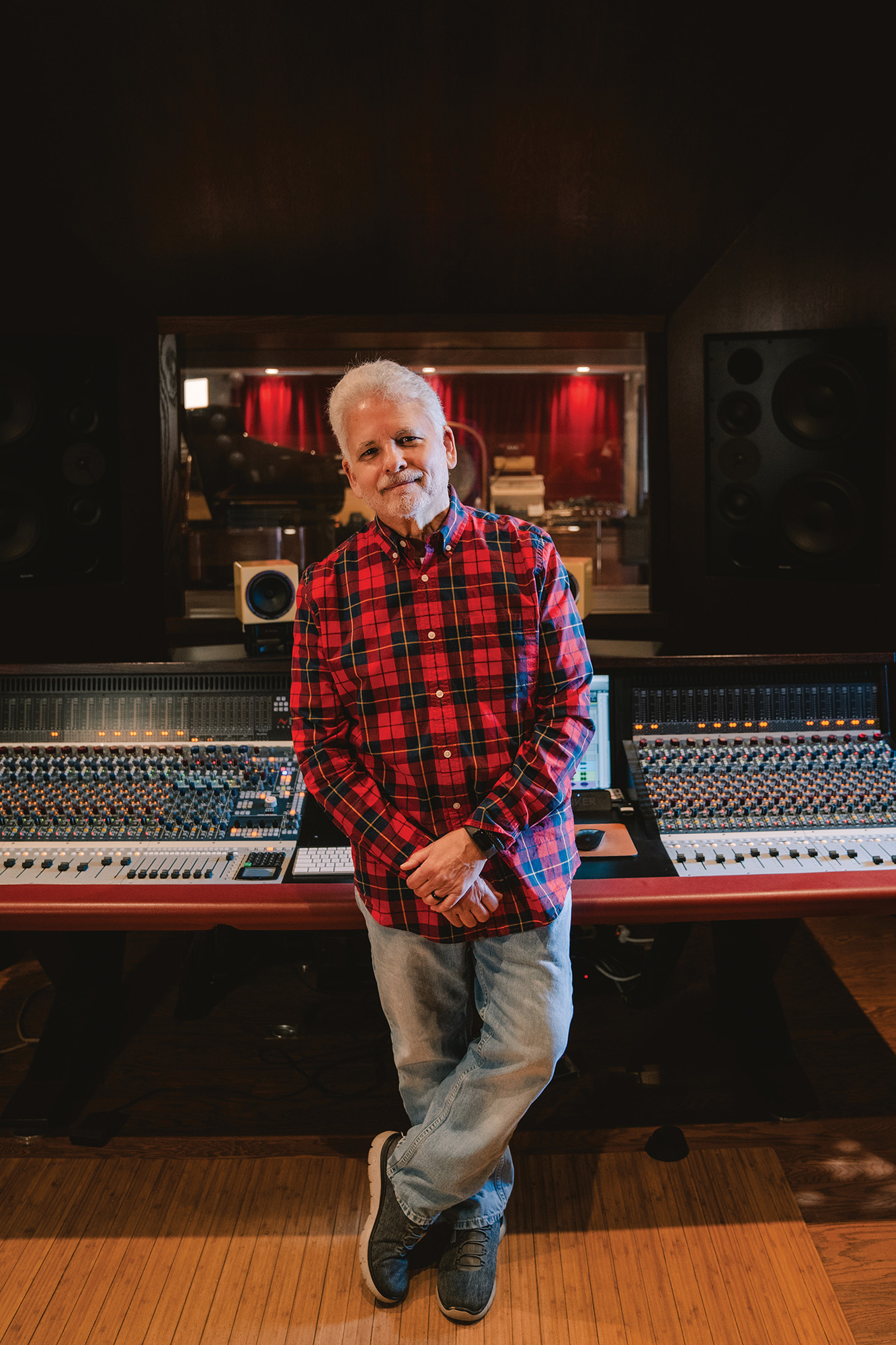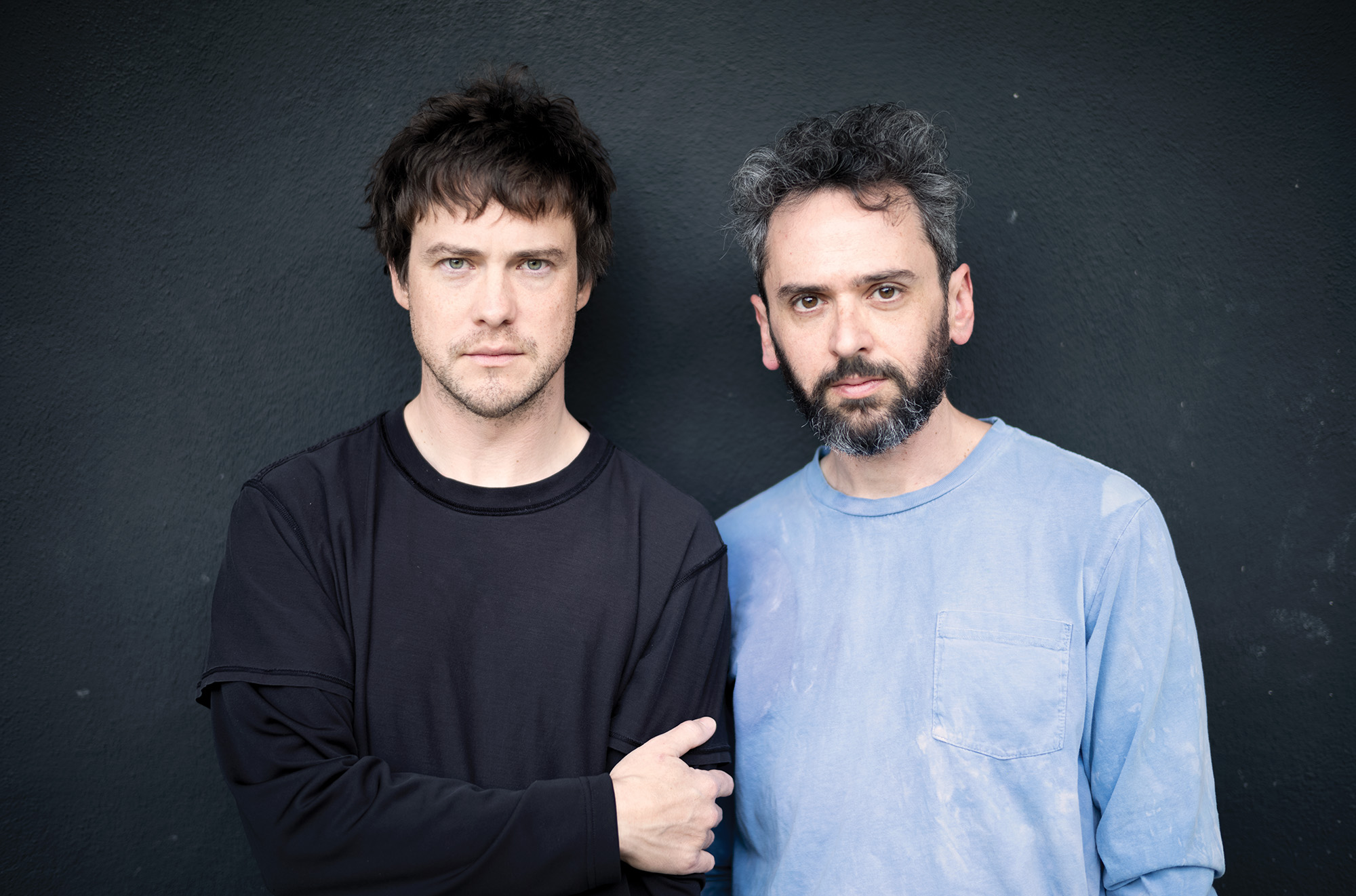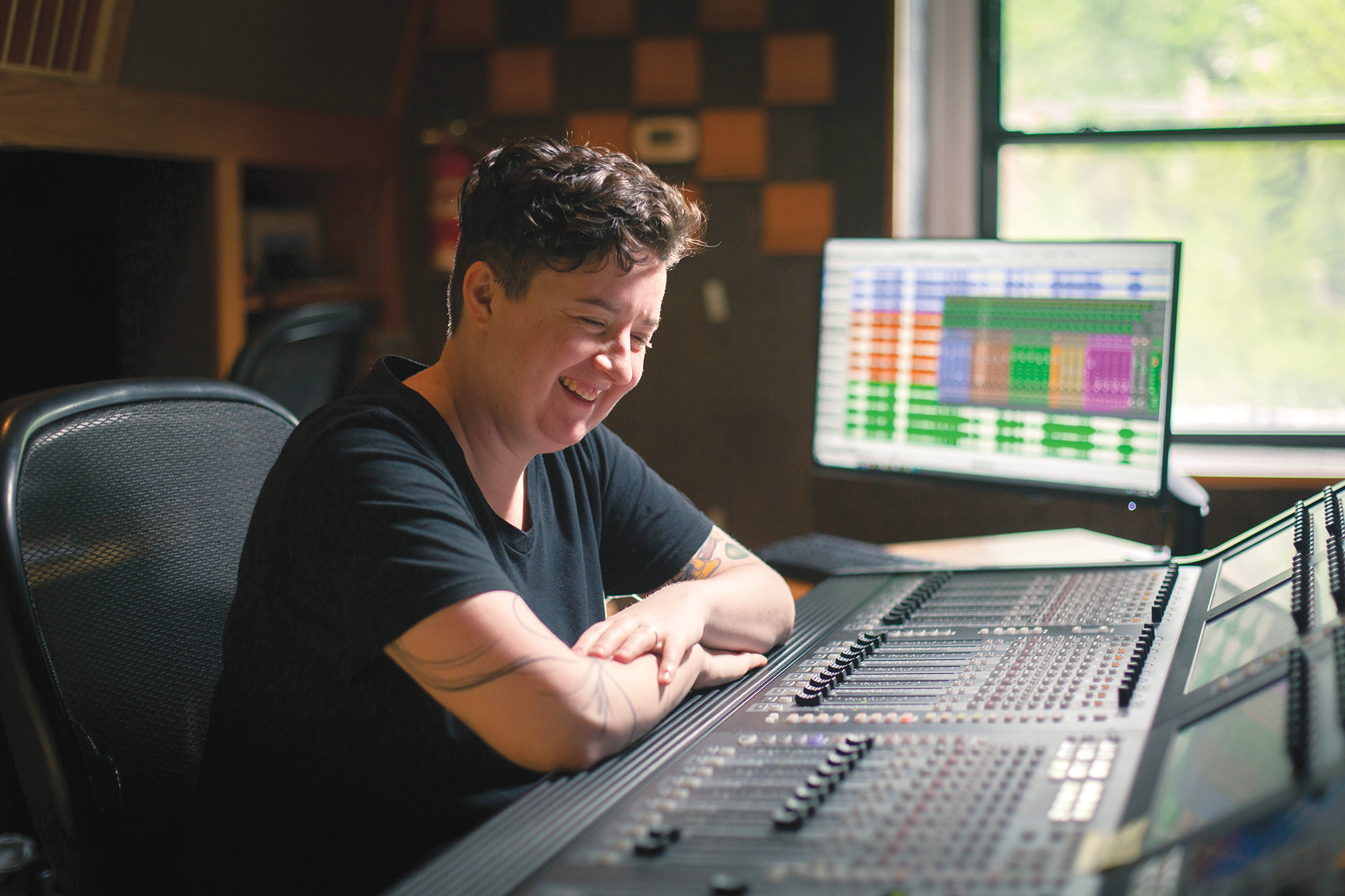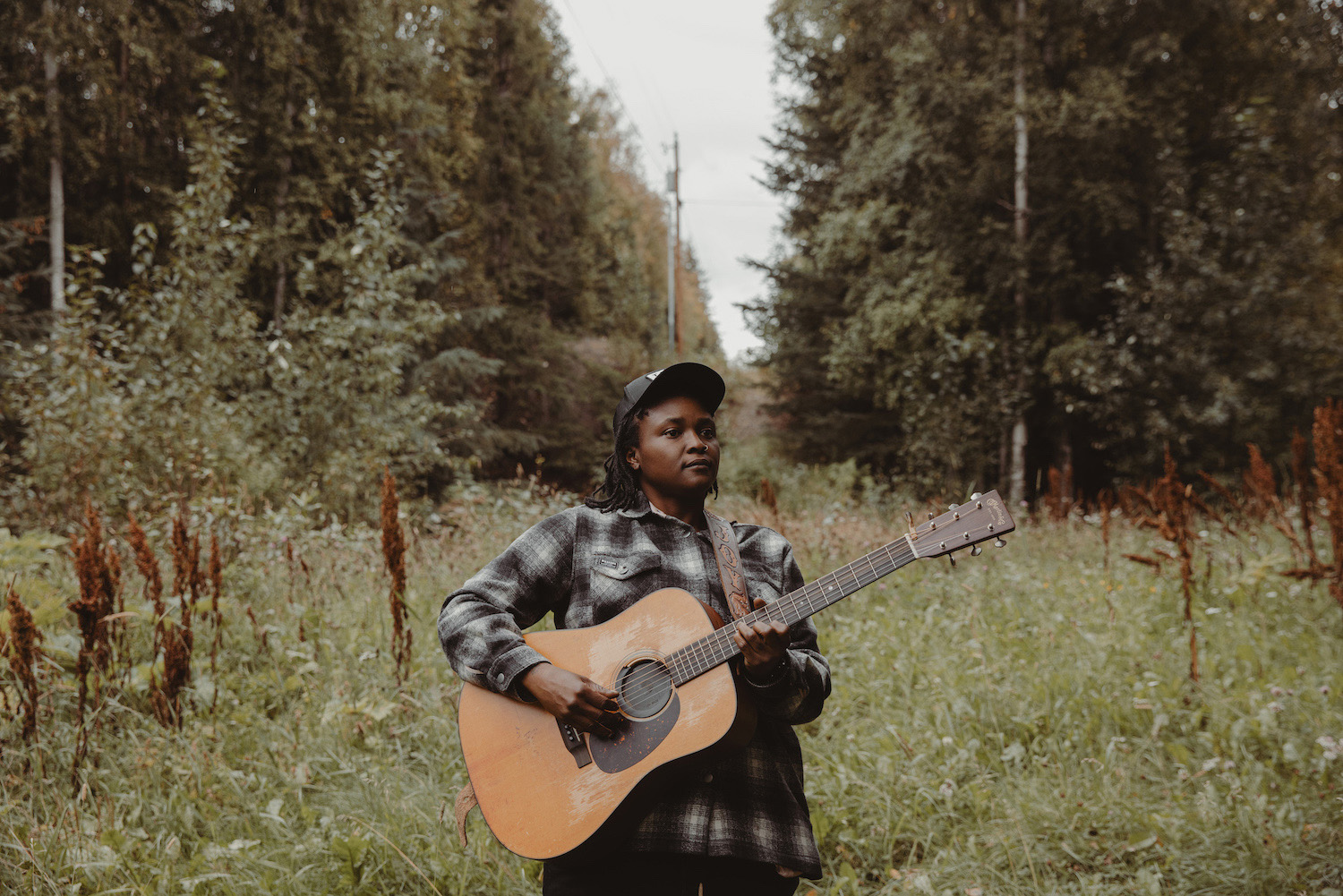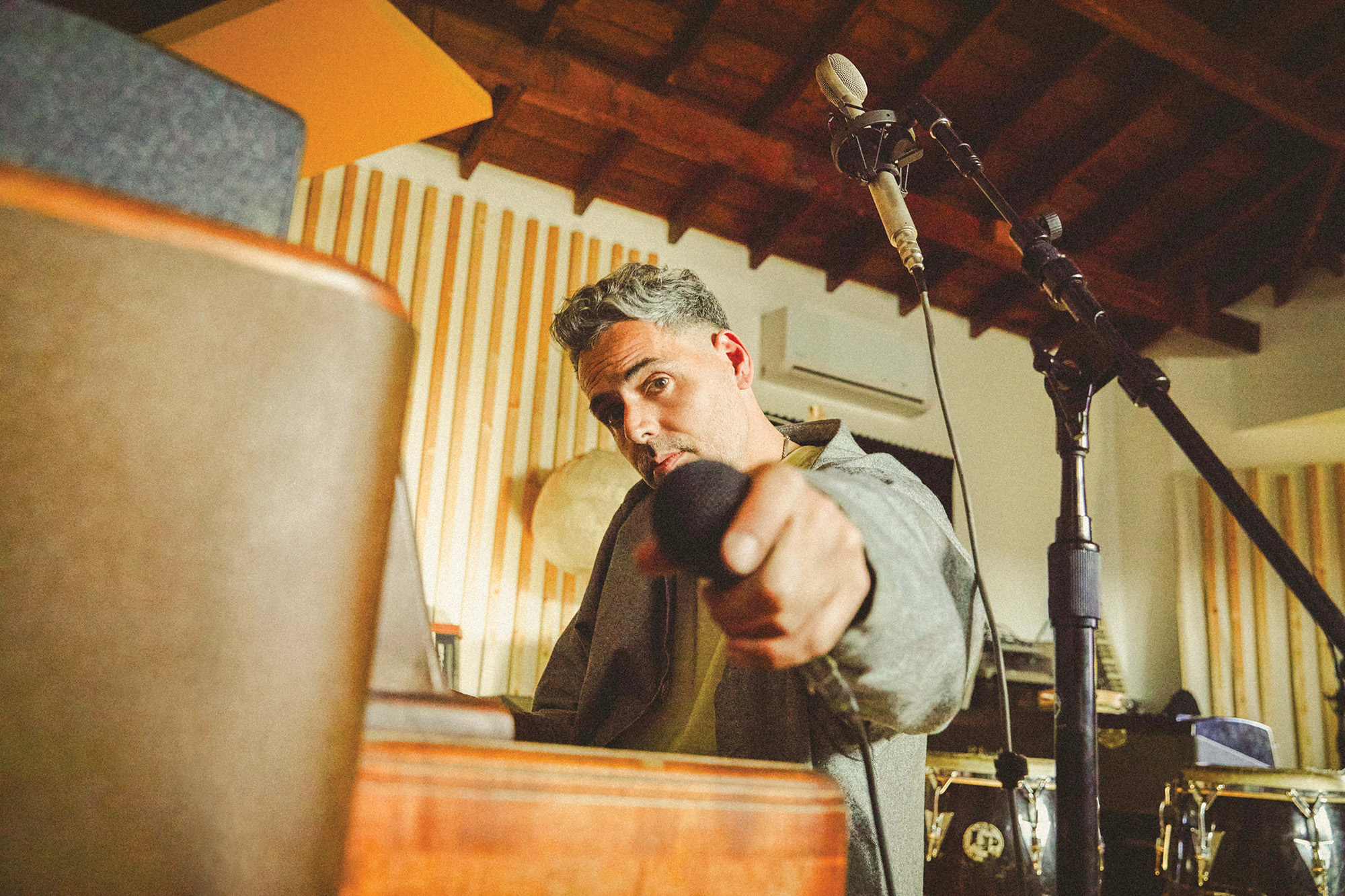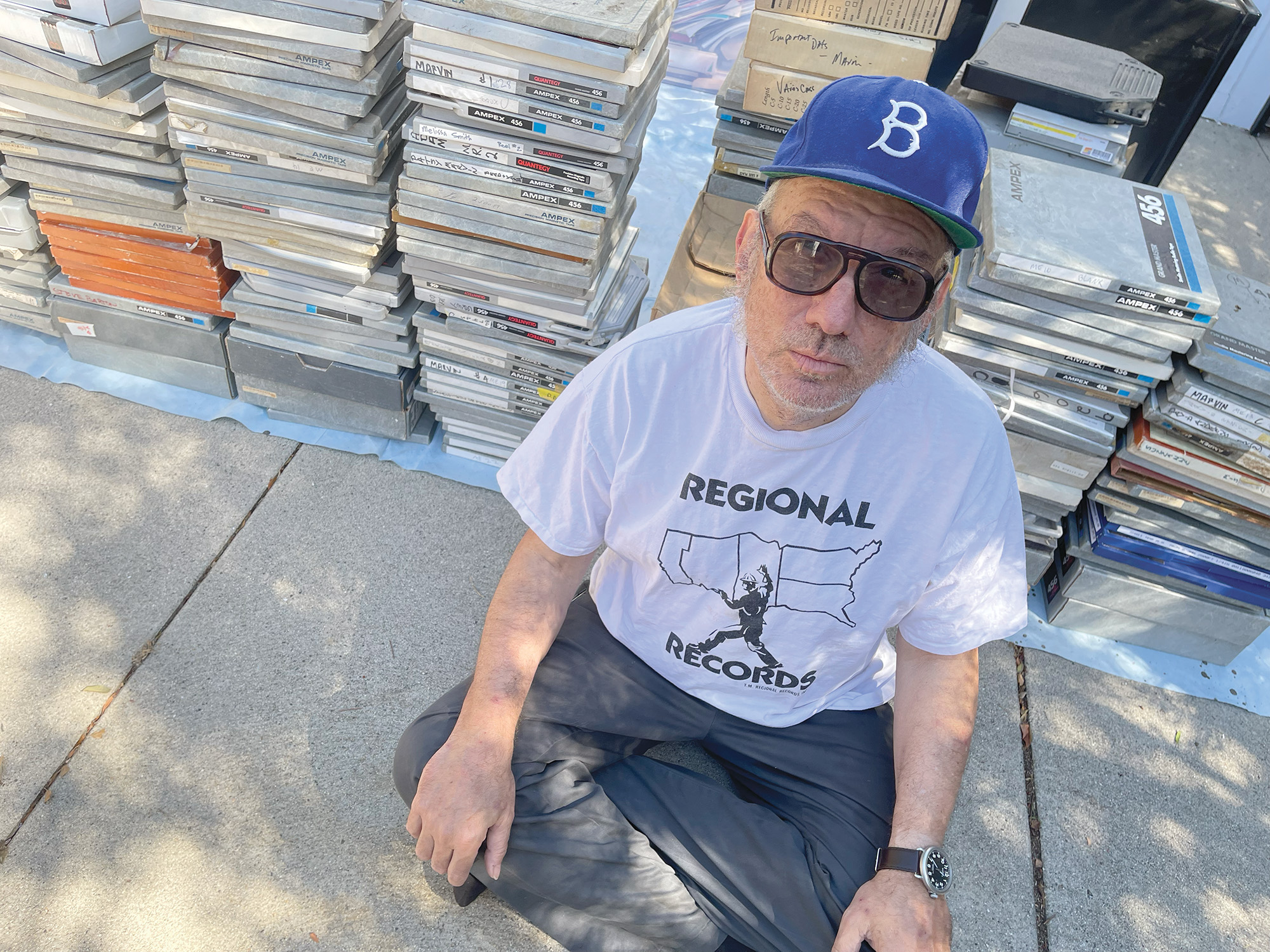How did you start working with Kevin Morby?
I became friends with Kevin through The Complete Last Waltz [tribute shows, Sam is the musical director]. He was a guest singer. I wasn't familiar with him at the time, so I was checking out his records. At the time he had Still Life and Harlem River. I wrote him an email a week after the show and told him that I was digging his music. He wrote back and told me he was looking for a producer for his next record. We ended up doing Singing Saw shortly after that. We've had this long working relationship since.
Whose idea was it to use field recordings on This is a Photograph?
Kevin was driving the presence of field recordings. A lot of that record is written about Memphis, and he gathered the sounds of the places he was talking about. It was incredibly cool. That's really prominent on "Disappearing," with the sounds from the shore of the Mississippi River. At my studio, he'd be walking around while we'd be working. There's a deck right off the studio and a big patio door, so there's a very natural indoor/outdoor flow in this place. I've found a lot of people will be listening on the deck, hearing the speakers blending with the natural environment, and wanting to capture that. That was used most notably on the song "It's Over." There was this bird call – a tufted titmouse – that was happening very much in time with the music. In the hook of that song – where Kevin sings, "It's over" – we sampled the bird. We didn't have to pitch it or change it at all. We doubled it with piano to give it a little more body in the mix, and it became this great hook in the song.
Kevin told me that you built a studio in upstate New York.
The studio grew out of the pandemic-inspired move upstate, which was centered largely around my kids. I've always worked in this area with D. James Goodwin [Tape Op #138]. I'd come up here to get out of the city. I always imagined that moving upstate would be great if we weren't tethered to the city. After Covid, we weren't. We were living upstate in this little cabin that we were renting for a while. Eventually, we bought this house in Accord, New York, which is near Kingston. Coincidentally, it's about five minutes from where we got married 13 years ago. We found this little farmhouse on ten acres of land, and it had this meadow in the back where they had horses. So, we decided to buy it and build a studio. The studio was designed by my friend, Michael Winningham, who is also a musician in Austin in a band called Palo Duro. We've been friends since high school, and we have made a lot of music together. He also builds and designs homes. He made the drawings, and I was able to find a contractor up here to execute them. It's a dream. It's a super open space with 20-foot ceilings. It's got a hallway that closes off where I can do amps, and an iso-booth in the middle, under the loft, for the drums. It's got this big, wide staircase that I love. The loft is open, so I've done brass up there and mic'd them from the bottom to recreate that church effect with the space in here. It's got a little lounge in the back, and a wraparound deck. It's in the woods, so deer come by the dozens and graze. You can see the Mohonk Mountains out the door. It's a big upgrade from the vibey but dingy basement I was working in when I was in Brooklyn. Now, there's a place for people to stay. It has all the things people would need. So far, it's been great. A lot of the people I worked with in Brooklyn have come up and stayed here. They all seemed to love it, and I certainly love it.
Are you recording digitally or analog?
I do digital. I have been for a long time. The last record I did with tape was [2013's] Songs from the Vanished Frontier, which is my old band, Yellowbirds', second record. Even that was a lot of tape into Pro Tools. Splitting the signal and hitting the tape machine so we could monitor from Pro Tools but record everything through tape and then sync it back up. The way I like to work is with the fewest people in the room, which means I do a lot of the engineering myself. I'm always playing on what I produce, so I got in the habit of the most efficient tools. That means digital for me. I want to spend time on the songs. If we need to pivot the arrangement, I want to be able to do that quickly. If we catch some magic before we know the song, I want to be able to loop it, edit it, or do whatever I have to do to use it. I do love the sound of tape, but I'm not one of those producers who likes to be pushed into the old-fashioned limitations of making everything linearly. I want to be surprised. That means making the most of any mistakes. With digital, I can loop a mistake and make a song out of that. A lot of people look at digital recording as having too many opportunities to fix mistakes, but I don't use it that way. I'm not a super technical producer or engineer. I don't know how to use [Celemony] Melodyne, so I never tune anything. With tape, I don't know how to align it or clean it. [laughs] I don't want to deal with that, either.
What's your ideal studio layout?
The ability to isolate the drums from vocals. I like to have the option of keeping a scratch vocal as the live vocal if it's live drums and piano. I like to get the piano right next to the drums, so the bleed is dry. I hate that far away roomy smear bleed that happens. Cymbals never get crisp again. So, I like to have the drums in a separate room from everything else. My new studio is centered around a drum booth. On the last few records in Brooklyn, I had been finding myself doing more and more in the control room. On the Curtis Harding record [2017's Face Your Fear], we did the backing vocals and horns all in the control room. Some of it we even did without headphones. I panned the mix for playback to one speaker. Then I put a figure 8 mic with the null pointing at the speaker, and I had either two singers or two horn players on either side of the mic. It was canceling enough of the playback so that we could work that way. With no headphones, and everyone in the room, we can be in normal conversational voice. I feel like creativity snowballs better without those obstacles in the way. This studio is an open-concept, with no control room. I have speaker cables run through the floor, so I can plug in a guitar amp in the main room, and it'll play through a speaker behind a closed door. The back room is wired up. There are lots of options, but it mainly feels like a central "hang space." And the drum booth is very connected to that.

What were your first recordings like?
The first time I ever tried to record something was with my band in high school. I tried to isolate things with a mattress. [laughs] That was in my parent's garage, and I recorded to a 4-track cassette machine. It was just an awful recording. My guitar teacher helped me make a record to a DAT recorder. That also sounded pretty lame. Then I went to Berklee [College of Music], but I went for guitar performance. When I got there, I wasn't really vibing on the program. I started a band and wanted to make a record. I realized that if I majored in Music Production and Engineering that we could use the studio time. I was completely focused on writing songs and being in a band. At that point, I had no aspirations to be an engineer or a producer, so it was a very fortuitous decision because we got a little studio time. The recordings came out sterile and unusable, but I did learn some basics that definitely helped me a lot along the way. I learned from those experiences in the Berklee studios, and other early experiences where it was rushed and low budget. I learned that just because we're in there with the good gear, it doesn't necessarily result in a "vibey" recording. That was the beginning of my infatuation with recorded sound and wanting to get the "vibe" to take to the recording. Capturing a vibe became paramount. I often felt the cleanliness and pristineness of recording were damaging. I remember [The Trashmen's] "Surfin' Bird" was a reference for me for a long time. In "Surfin' Bird," the band comes in like an explosion. I ran a mix of a song that we did in the Berklee studio that was super clean to a cassette. I played it on this little, tiny speaker. I thought, "Well, this sounds cool!" I wanted to put a mic on that, because it was better than the way the master tape sounded. It bloomed from there. I had this band, Apollo Sunshine, in the early 2000s. We evolved together, as far as recording ourselves, and that lesson kept being reinforced. That lesson being: Doing it yourself and finding a way to make your sonic vision come true is always better than having the best gear, or even the most skilled people running it. I found out later that there are engineers who "get it," and they will make your record sound how you want it to sound. I didn't know that yet. I hadn't worked with them yet. That lesson really hit home the hardest when we were making the last Apollo Sunshine record, Shall Noise Upon. We did it in this studio upstate in Catskill called Old Soul [Studios]. We were recording to tape – for some reason we were analog purists at that time. Our friend, Quentin Stoltzfus, was helping us with the production and engineering, and we were able to get Dave Fridmann [Tape Op #17] to mix it for us. In our young minds, we needed to leave a lot of room in our arrangements for him to do all his crazy shit. When we went to mix it with Fridmann – who's still someone I admire so, so much – we said things like, "This part needs to be in a giant splash of reverb!" Fridmann asked, "Well… why isn't it?" [laughs] We thought we needed to use his amazing reverbs and Fridmann was like, "Okay? What's the difference?" I didn't fully appreciate that at the time. Now, I completely get it. Who cares?! It's the broad strokes that matter. David mixed the whole record and did a fine job. But we listened to it, and we realized that it wasn't finished. What we thought was us leaving space for our hero mix engineer to do his thing was actually us not putting enough weird, creative stuff in our arrangements. At that point we had completely blown our budget. So, the three of us finished the record on a [Digidesign] Mbox, doing crazy things like running a Radioshack mic through a wah-wah pedal, playing a conga and slowing the tape down to half-speed. Getting weird and creative with it. Then, we mixed it ourselves at this place in Brooklyn that's gone now, called Headgear [Recording, Tape Op #65]. We booked it for three or four days and mixed the whole record in that time. The record's got some wacky sounds on it. But it became a great record at the end when we got completely weird and threw caution to the wind. We threw out the idea that people we look up to, just because they've made great records, could make our record great. I realized very quickly that great records come from the people inside. I stopped caring so much about bringing in outsiders and more about creating an environment that worked. Also, [investing in] getting reasonably good equipment so that if the demo is magic, it doesn't have to be a demo.
At what point did you realize that a career in production was a real possibility?
In the last couple years of Apollo Sunshine, I had moved to New York and started making music on my own. I put those records out as Yellowbirds. The first one was called The Color and there was a second one called Songs from the Vanished Frontier. Those were pretty DIY records. On The Color, I went into my friend Travis Harrison's studio, Serious Business. He's still there. It was in Manhattan at the time. We recorded the basics to tape. We did all the basics in two days and then I took them home on Pro Tools and continued working on the record on my Mbox. A few songs were done entirely at home on the Mbox. With that limited gear, I finished the record and people liked it. It got good reviews, and there was a feature in Audiophile magazine about my Mbox record. That was my first time collaborating with D. James Goodwin, who I've worked with a lot. I met him while I was playing guitar on a Norah Jones session for John Hill, the producer. [Goodwin and I] became fast friends. He gave me a lot of advice on how to record The Color by myself, and then we mixed it in two days up at The Clubhouse, where he was engineering at the time. I made The Color, and friends started asking me to produce their records. I had never thought of myself as a person who did that, but on that record, I was the producer and people started calling. I produced my friends Dawn Landes [Tape Op #80], Annie Nero, and Lauren Balthrop. They had The Bandana Splits, this cheeky, '60s girl group kind of thing, like The Caravelles. They asked me to produce the record [Mr. Sam Presents…] for them, so that was the first thing I ever produced. Then, a singer named Blake Hazard, who used to have a band called The Submarines, asked me to produce her record [The Eleanor Islands]. At that point I started renting a studio space of my own with some friends, and then it started slowly growing. I had this baby production career blooming. I had my performing artist career that I was still trying to move the needle on. Over the next ten years, it evolved to where I was making a living producing records. It was affording me opportunities to make my own albums, my creative statements. It shifted over a decade, starting with The Color.
What are some major differences in how you approach recording an album now to when you started?
I don't think it's changed a huge amount. There are less fits and starts, I guess, because I've done it more times. I first assess the material (or lack thereof), and then figure out what the record should fundamentally sound like. "How do we lay the foundation?" Every record is different. It might be cutting basics with a few musicians. It might be a thing where I need to assemble a killer band and record somewhat or entirely live. I've also done records lately where it's just a singer/songwriter and me, and all they have is some voice memos. I did a record with Rhett Miller [The Messenger] recently where he came in with a Dropbox full of song ideas. We talked about doing something different for him using different sounds; some synths, drum machines, and weird guitar tones. We would do a song a day. We'd pick a demo, rearrange it, and twist it into some new idea that we were both excited about. We'd play with the chords and make some changes. Once we had a form, I'd work on the music all day in the main room, and he'd work on the lyrics in the back room. We'd check in with each other. He'd say, "I like this; I don't like this." I'd say, "Cool, cool, I'll change it." He'd show me what he was working on, and I'd say, "This line is strong and this one could be more like that one," or whatever. We made the record like that. The process is always changing. I don't know if it's even that different than it used to be. [laughs] I'm just better at it. I have much nicer preamps and mics now, and I've retired the Mbox!

As an artist with an established solo career, how do you balance your role as a producer?
The challenge for me is figuring out exactly what the role of a producer is on a given project, because that can change. With Curtis Harding, we're writing and arranging together as we go. With Kevin Morby, there's a similar amount of trust. With both of those guys, I'm like their bandmate, their partner, or their collaborator when we make a record together. With someone like Rhett, where it's just him and I, that's beyond a typical producer role. It's a full-on artistic collaborator. I feel very comfortable in all those roles because that's my background; having a band, making this song come to life and getting right inside it. I'm less experienced with a band who has their own dynamics and they're going to play everything. Or an artist who's been doing this a long time, where they come in with very specific goals that they need to accomplish. That's challenging for me. If they need a musical collaborator, that's easy for me. If they need some combination of therapist/taskmaster, it's hard to get the balance right and know when each thing is needed. I'm often in a scenario where the song exists but the arrangement doesn't. If I have an idea, I can play it and it comes to life through ideas taking shape.
You have a new album, Slow Fawn. Can you describe it? Was it recorded in your new studio?
Yeah, entirely, except for "Day In, Day Out." I recorded the bass, drums, and piano here, but I demoed it in the cabin that my family was renting at the start of the pandemic. It was on a [Universal Audio] Apollo Twin. It was during a time when I could barely work on music. I had a little setup in a corner with a synth and a drum machine. I made the demo of that and recorded the vocals with an [Electro-Voice] 635A after the kids had gone to bed. That was how I was making music at that time. I was watching my girls all day, and the only time I had available to work on music was after they went to bed. With the synth and drum machine, I could work on those with headphones and not wake them up – it was this tiny little cabin. That song has a quiet [Roland TR-]808 cymbal in the intro, and an arpeggiating Moog Matriarch thing that enters in the middle. But the original demo was those happening the whole time. And then all the vocals set on top of that. I very quietly did the acoustic guitar and the vocals. There are crickets bleeding into the mic. It sat like that for a long time. I finished it after I had the studio. Everything else was cut here. There are intentionally placed crickets on "Meadow Music" that aren't even from my meadow! Oliver Hill [a.k.a. Dustrider], who I worked on that track with, said, "I've got these sonic-mayonnaise crickets I've been using." We put those in, and it was nice. Originally, the filter on the synth was more open, and there was this sizzle up there. But when we blended the synth-y demo that I had with his violin and piano ideas, everything wanted to be more rolled off. We created all this high-end space by darkening tracks. The crickets were an unobtrusive way to fill back in that sort of cymbal sizzle, or open filter range.
You sound comfortable with the process.
Thank you. I'm glad to hear that. I was comfortable, and the reason for that was I didn't view it as working on my record. I was making music that I wanted to make, with friends or by myself. It was all part of an excited healing process. I had to take six months away from working on music seriously. I have young daughters, and for six months I was just caring for them. I was trying to keep my daughter – who was in kindergarten at the time – on track learning to read, and my wife was working full time. Somebody had to be with the kids and help them. That was me. Eventually we ended up living upstate [New York], and we bought this place. I built a studio, so when I was able to get back to working it was in a brand-new environment. It had always been my dream to have a studio upstate. I started delighting in sound and what I could do in here. It was a very playful approach. It also coincided with the time that I felt that I could get in a room with people again. Friends started coming over; Cochemea [Gastelum] and Photay [a.k.a. Evan Shornstein], Saundra Williams, Oliver Hill, and Stuart Bogie. I'd invite them over to improvise or make a little piece of music. I had no idea I was making a record. It was just, "Let's do some music today." Months later, I put it all together and thought it was such a cool album. I went back and forth wondering if it was my album. It's a very different thing for me. I almost feel more like the conductor of the album. On albums from my past, there's lots of singing and lots of guitar solos. [On Slow Fawn] I put away those familiar things and started messing with instruments that I know less about, like drum machines and synthesizers. I also let the saxophone – which I don't play – be the lead instrument for a while. It was fun to take myself out of it, in a way.
Are there plans to tour on Slow Fawn?
I don't have any touring plans right now. In fact, I don't have any performing plans at all. I do look forward to getting back onstage at some point. But right now, I'm very happy just being in the studio.
